Table of Contents
Energy Pathway:
There are two ways to study the pathway along which the energy flows. These are-
- To study the food relationships between the species and the community by means of food chains, food webs and trophic levels.
- To ascertain the number of organisms, their biomass and caloric content.
Food Chains:
Our food comes from the green plants which make food from simple inorganic substances by the process of photosynthesis. Since these plants make food, they are called the producers. The plants are eaten by the plant-eating animals (herbivorous) called primary consumers. The primary consumers are eaten by the flesh-eating animals (carnivorous) called secondary consumers. The secondary consumers are, in turn, eaten by still larger or higher animals called tertiary consumers. Very large carnivorous animals, which are not consumed by other animals, die and get decomposed by a set of organisms called decomposers. The decomposed material is then used by plants. The potential energy alongwith the food materials is, thus, passed through the community from the producers to the successive orders of consumers, setting up a food chain. At each stage, there is a release of energy as heat.
A food chain represents a single energy pathway. For instance, grasshopper eats the grass and in turn, it is eaten by frog. Frog is eaten by snake and the snake is eaten by peacock, eagle or vulture. This energy flow may be represented in a food chain as given below-
Grass —–> Grasshopper —–> Frog —–> Snake —–> Peacock
In case of land, a food chain may be written, in a general way, as follows-
Plants —–> Herbivorous like hares and deers —–> Small Carnivorous like foxes and cats —–> Large carnivorous like wolves —–> Largest carnivorous like lions and tigers.
In a pond, a food chain may be-
Algae —–> Protozoans —–> Small aquatic insects —–> Large aquatic insects —–> Small fishes —–> Large fishes or Birds.
In the ocean, a food chain may be-
Phytoplankton —–> Zooplankton —–> Small fishes ——> Large fishes —–> Still larger fishes.
Food chains may be longer or shorter than those given above but often there are three or four steps.
Food Webs:
A community has numerous food chains, most of which are inter-connected by species occuring in more than one chain. The various inter connected food chains in a community form a food web. A food web can have three kinds of food chains-
- Predator chains- the chains beginning with plants and proceeding from small to large animals.
- Parasitic chains- the chains proceeding from large to smaller organisms.
- Saprophytic chains- the chains proceeding from dead animals to micro-organisms.
Trophic Levels:
Each link or step in a food chain is called the trophic level. The plants, known as the producers, represents the first trophic level. The animals feeding on plants i.e. herbivores known as the primary consumers form the second trophic level and the flesh-eating animals i.e. carnivores called the secondary consumers, constitute the third trophic level. Large carnivores which feed upon small carnivores form the fourth trophic level.
The animals at successive links in a food chain progressively grow in size but decrease in number. Due to this, if you compare the number of organisms at different trophic levels in a chain then it is possible for you to represent the food chain by a pyramid of numbers called food pyramid. A food pyramid may be defined as a quantitative arrangement of animal populations in the food chain of a community. Each successive level of a food pyramid indicates an increase in the size and decrease in the number of animals. The base of the pyramid has producers and the apex has the last-order consumer.
The pyramid is, however, not so simple as it appears to be. In nature, lion does not feed upon only one animal but a number of animals example- buffalo, deer, wild boar and chinkara.
The same ecosystem may have several food pyramids, each with a different animal at its apex.
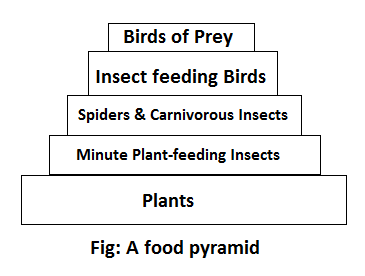
Amount of Energy Fixation:
One can measure the amount of energy fixation from the following photosynthetic equation-

The amount of energy fixation is not the same but changes from about 0.2 per cent in an aquatic ecosystem to 5 per cent in agricultural ecosystems.
Some amount of energy is always lost during the transfer of energy through successive trophic levels in an ecosystem. No energy transfer is, therefore, 100 per cent efficient. According to a generalization, called the 10 per cent law, given by Lindemann (1942), only about 10 per cent of the energy in the food eaten is changed into biomass (the total mass of living matter found in a living organism) of the eater. For instance, 100 kg of grass will form 10 kg of the flesh of its eater, deer. 10 kg of the flesh of a deer will turn into 1 kg of the flesh of lion that feeds upon the deer.
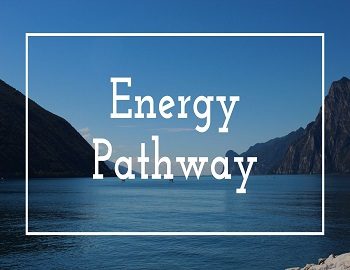


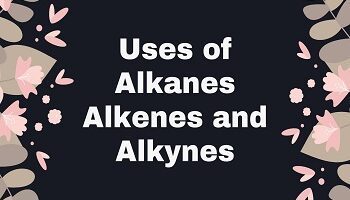
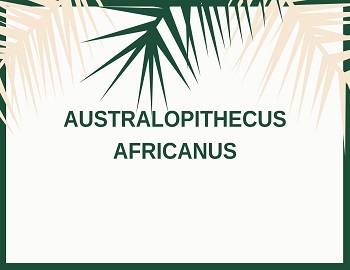
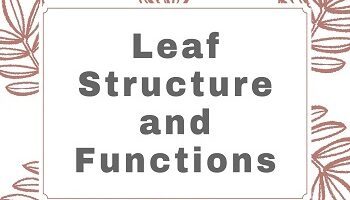

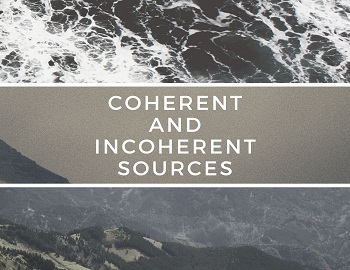

Comments (No)